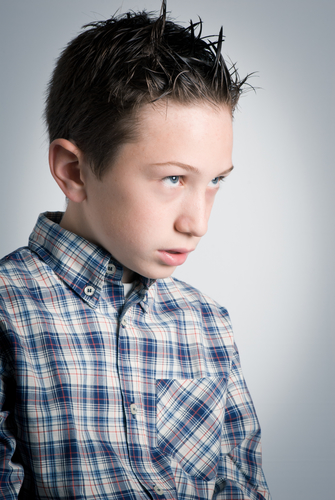 Autism Recovery and Communication for Severely Autistic Children
Autism Recovery and Communication for Severely Autistic Children
Communication for severely autistic children tends to consist of a high-pitched, fast-paced screeching sound that is a part of their vocal stimming. As they go through our autism recovery program, this sound gets deeper and begins to slow down. Then, it gradually becomes a deep (full of bass), slow, moaning sound. Once this happens, the children tend to start speaking. Gautham, a child we worked with in India, is an excellent example of this.
Autism Recovery and Communication: Babbling
As the severely autistic child begins recovery, the earlier forms of communication might be to babble by producing vowels and combining them with a consonant. This will generate syllables like “da” and “ba”. This is an important milestone in speech development. It marks a departure from the imprecise, subconscious stimming to deliberate, precise sounds. Now, with better articulatory control, the child can produce single syllables with precise timing. As recovery continues, the child may produce babble with multiple syllables like “dada,” “guhguh,” “mama” or “baba” and even longer chains, like “dadadadada.” This type of babble is called canonical babbling and is usually followed by one-word sentences within a matter of weeks.
Autism Recovery and Communication: Sentences

The initial one-word sentences are usually reserved for communication when responding to a question from an adult in authority or to indicate something that is needed. For example, your child might answer by saying, “Yes” or “No.” Or, your child might point to a food item and name it indicating that they want you to give it to them. Or, perhaps your child might begin
The one-word sentences will become two- to three-word sentences. These sentences will be purely to replace pointing and motioning to you. However, once the sentences become three- to five-word sentences, your child might begin to actually converse with you. Here is a sample conversation that occurred between a mother and son about four months after they entered our autism recovery program. Prior to our program, this child was not speaking at all.
Mother: “What are you doing?”
Son: “Looking out the window.”
Mother: “What are you looking at?”
Son: “The rain. I can’t go out to play.”
This mother was so pleased. She said, “It seems like I am dreaming. I can’t believe I am actually communicating with my son!”
Keep in mind that children may skip any of the steps above as they will progress according to how their brain develops. Children who are not severely autistic may start anywhere in this process and move along the same path. For example, a child may already be speaking one-word sentences when she starts our program. The next step for her would be to begin using three- to five-word sentences. Or, a child may be speaking with echolalia only. The next step for this child may be to use one-word sentences in a meaningful manner. Or, this child may jump directly to three- to five-word sentences used in a meaningful manner.
Click here or the picture above to meet Landon.
Becoming the Best Autism Recovery Advocate
Finally, keep in mind that these steps are the same steps that the child would have taken during the first few years of her life if neurotoxins in her brain hadn’t prevented it. All of this looks completely normal and acceptable on a toddler. People would have welcomed it and encouraged it. Unfortunately, it will look odd to see this on a 5-year-old or a 10-year-old. Please use your imagination and learn to see the toddler struggling to learn to speak and encourage it. Become the best advocate a child could ask for. NEVER make your child feel bad because she is learning to speak once she has gotten older. Jump for joy just as you would have if she were babbling and saying, “mamamama” when she was seven months old. Your child needs this encouragement.

In most cases, it isn’t a matter of their brain developing. No, in most cases their brain is healing. Therefore, the child will progress through the developmental remnants much faster than a toddler would go through the developmental phases because the autistic child’s brain is older and more developed in many ways. At any rate, any of the milestones below that were missed will usually begin to occur.
Communication Milestones that May Have Been Missed:
- Follows instructions with 2 or 3 steps
- Completes sentences and rhymes in familiar books
- Says sentences with 2 to 4 words
- Can name most familiar things
- Names items in a picture book such as cat, bird, or dog
- Understands words like “in,” “on,” and “under”
- Says first name, age, and sex
- Names a friend
- Says words like “I,” “me,” “we,” and “you” and some plurals (cars, dogs, cats)
- Talks well enough for strangers to understand most of the time
- Carries on a conversation using 2 to 3 sentences
Communication Issues Typical for Toddlers and Autistic Children
- Repeats words overheard in conversation (becomes echolalia)
- Embarrassing moments as speech improves 327 – 329
- Refusing to listen 413 – 414
Though your child is much older, you have to remember to do the things you would have done if he was going through this phase at age 2. A two-year-old is, by and large, a visual learner and communicator. Until they progress through this phase, any instructions given should be presented with a visual aid. For example, use your hands to motion what you are saying. Use flash cards like the following when teaching them:
Expectations of behavior should be presented in their positive form, rather than beginning with “no” or ”don’t”. For example, ”no hitting” should be stated as ”touch gently” while you demonstrate. Or you could say, ”keep your hands on your lap” while you demonstrate. It may be helpful to present these expectations in a visual form such as on a flashcard with an illustration or image depicting the desired behavior. These images can be pointed to in the event of the child needs a reminder.
Helpful suggestions can also be found in What to Expect: The Toddler Years by Eisenberg, Murkoff and Hathaway (ISBN 0-89480-994-6 ) in the text box on p 360 and on pages 424 – 426. Tips on helping to improve the clarity of speech can be found on page 449 – 450. Many of these suggestions come naturally when talking to an actual 2-year-old. Give them a try and you will find that they are just as effective regardless of the age that your autistic child enters this phase. Keep in mind that these suggestions will work better and better as your child’s brain heals. Therefore, if they don’t work well at first, just keep trying until they do.
Therapy Options
In most cases, parents are fully capable of teaching their child to speak. However, some parents need a little help in this area. For these parents, there are a wide range of therapies available.
Speech and Language Therapy (SLT)
SLT aims to assist your child with communicating more effectively with those around them.
Occupational Therapy (OT)
OT considers cognitive, physical and motor skills to implement programs that foster independence and wider participation in life. Targeted skills might be learning to dress independently, tie shoes or use the toilet.
Applied Behavior Analysis (ABA)
This ABA approach is one of the most widely accepted autism programs. It is based on the principles of behaviorism, believing that positive reinforcement increases desirable behavior and no reinforcement should be given for negative behavior. ABA is offered in the classroom or the home. It aims to equip those on the autism spectrum with social, practical and academic skills that will enable them to become increasingly independent and successful. Each individual will have his own skill plan tailored to him depending on the behavioral observations of his assigned analyst. Success is also measured by observable behavior.
Unfortunately, most of these professionals do not believe that your child can ever be completely neurotypical. Therefore, they will set the bar fairly low for your child. As our autism recovery program helps your child’s brain to heal, you will have to help these professionals adjust their expectations and raise the bar for what they expect from your child. Sometimes you can accomplish this and sometimes you can’t. For example, one mother that we worked with in the UK had ABA professionals working with her child for over a year before starting our program. There was absolutely no progress. The child was considered unable to learn. Within the first month of our program, the child began to benefit from what the professionals were doing. By the fifth month, the child would complete all of the ABA Analyst expectations for the entire month in just a few days. The ABA therapists was literally crying in frustration because she didn’t know what to do with the child for the rest of the month. The mother decided to switch to a new team of therapist who were willing to see her child’s new potential. In no time at all, the child was learning her alphabet and numbers because the new team could the possibility that this child was going to become neurotypical. So, they were willing to raise the bar! The child’s school began sending home homework. Near the end of the school year, the school applied for and received government funding to cover this child’s education all the way to receiving a PhD! This child was the first autistic child to receive this funding on the basis of academic improvement in the entire history of the school system!
 Next:
Next:
 Eating Tips For Children With Autism
Eating Tips For Children With Autism
Success With Sleep Issues Associated With Autism
Theory Of Mind: A Key To Understanding The Thinking Of Autistic Children
Popular Related Topics
Primary Wellness Consultations
Natural Healthcare Center Location
Donations: Help Us Help Others
Email Us, How Can We Assist You?
 Start your path to optimum health by scheduling your appointment today. Member: Certified Natural Health Professionals
Start your path to optimum health by scheduling your appointment today. Member: Certified Natural Health Professionals



